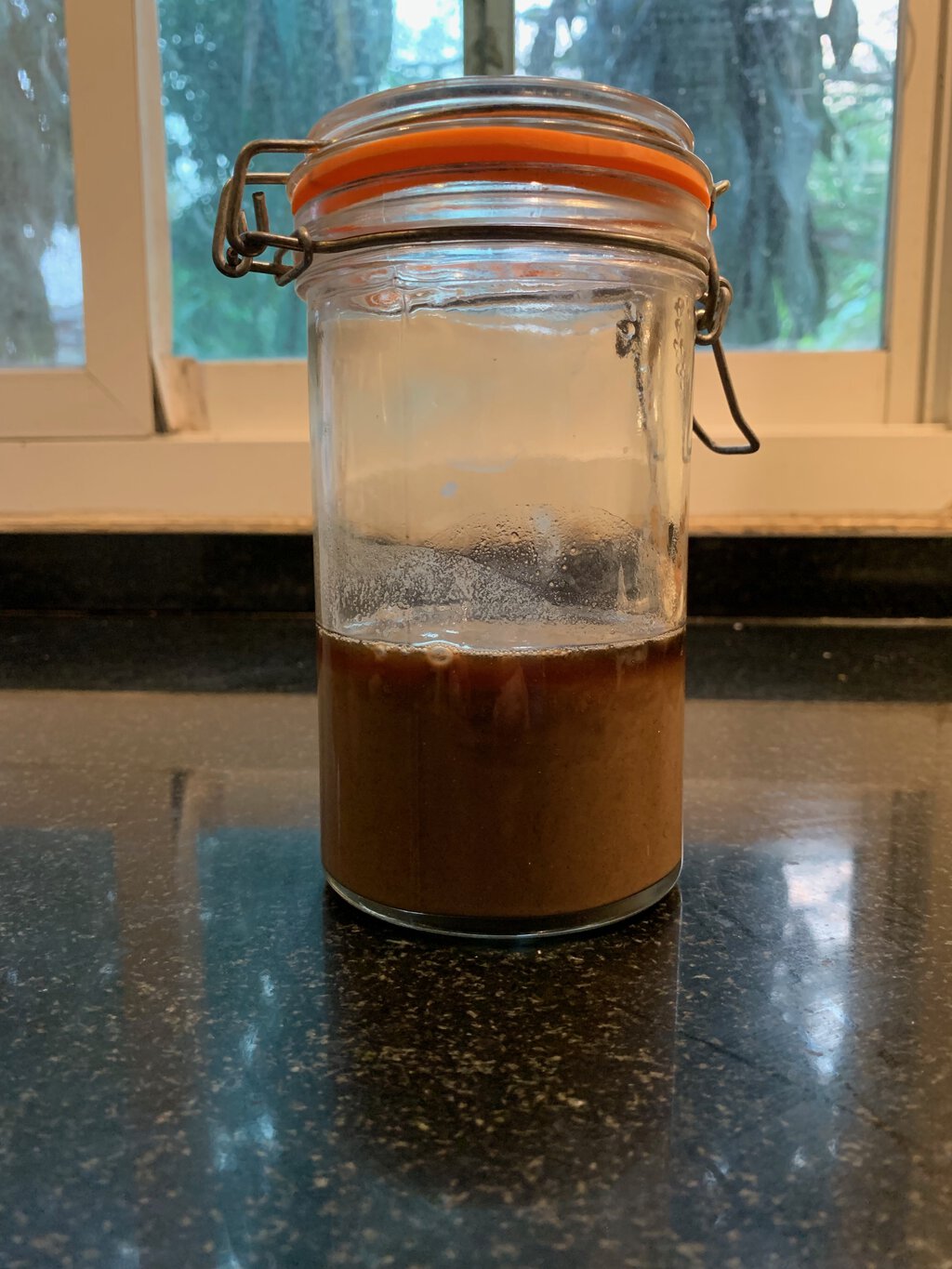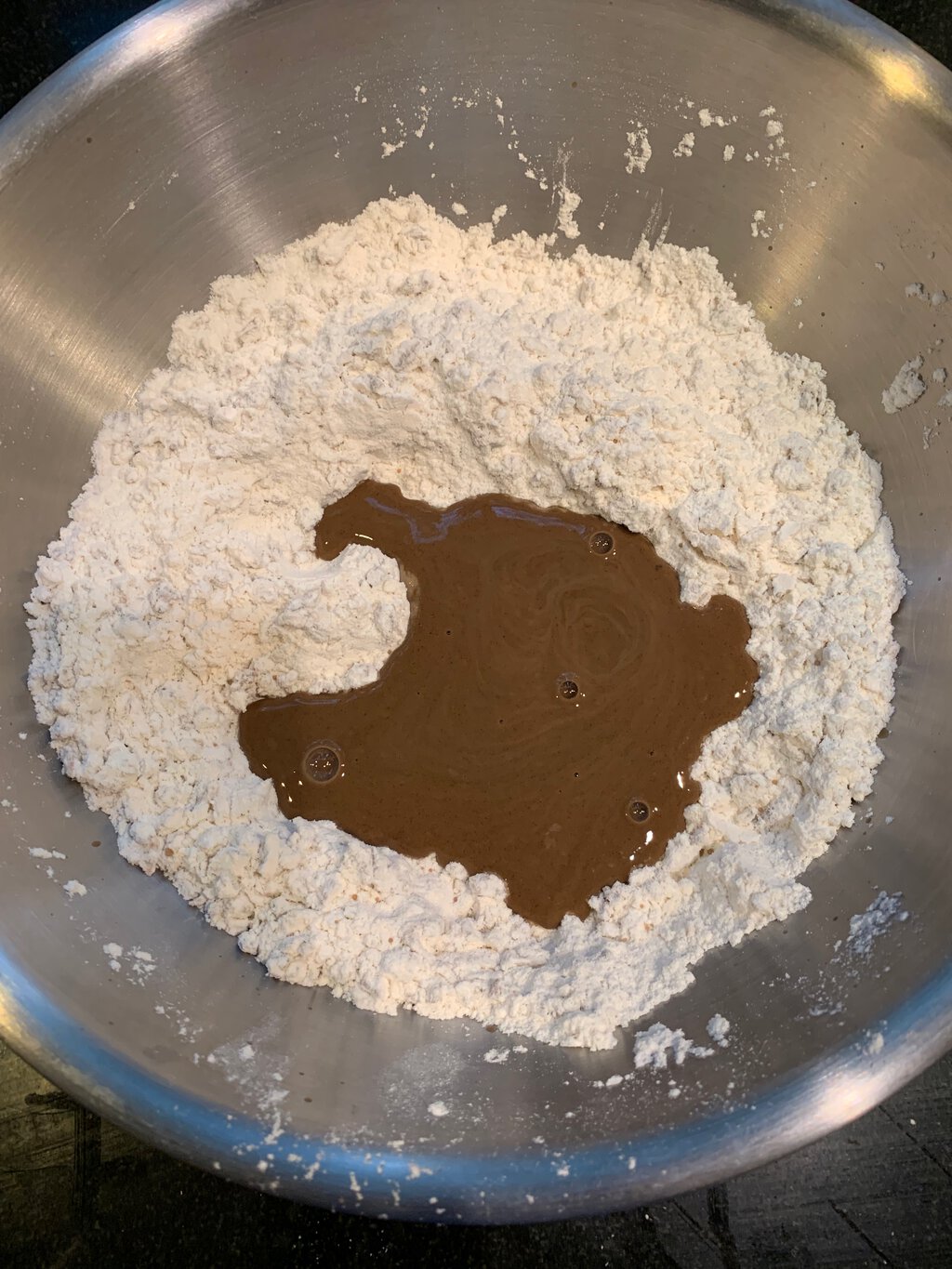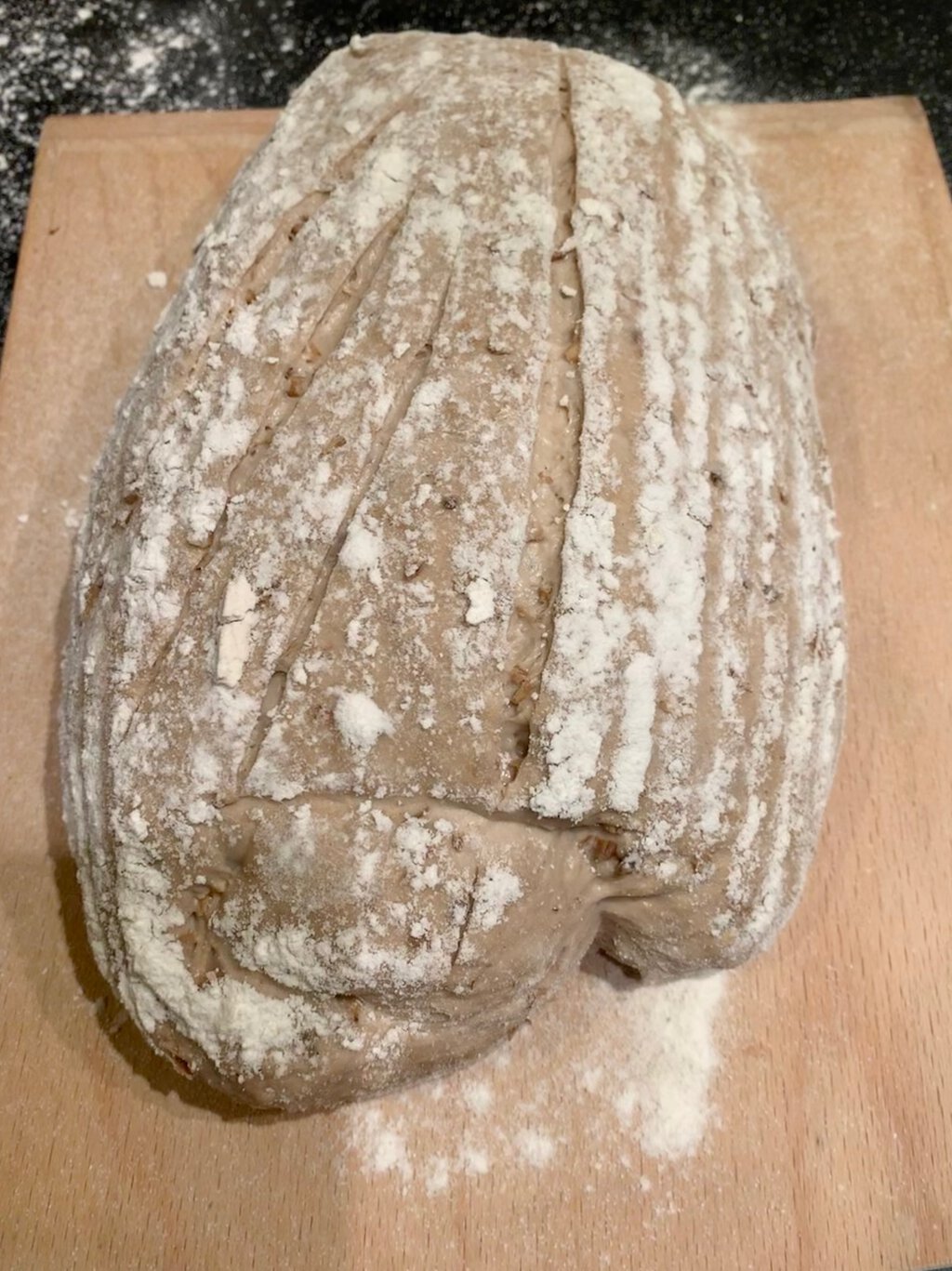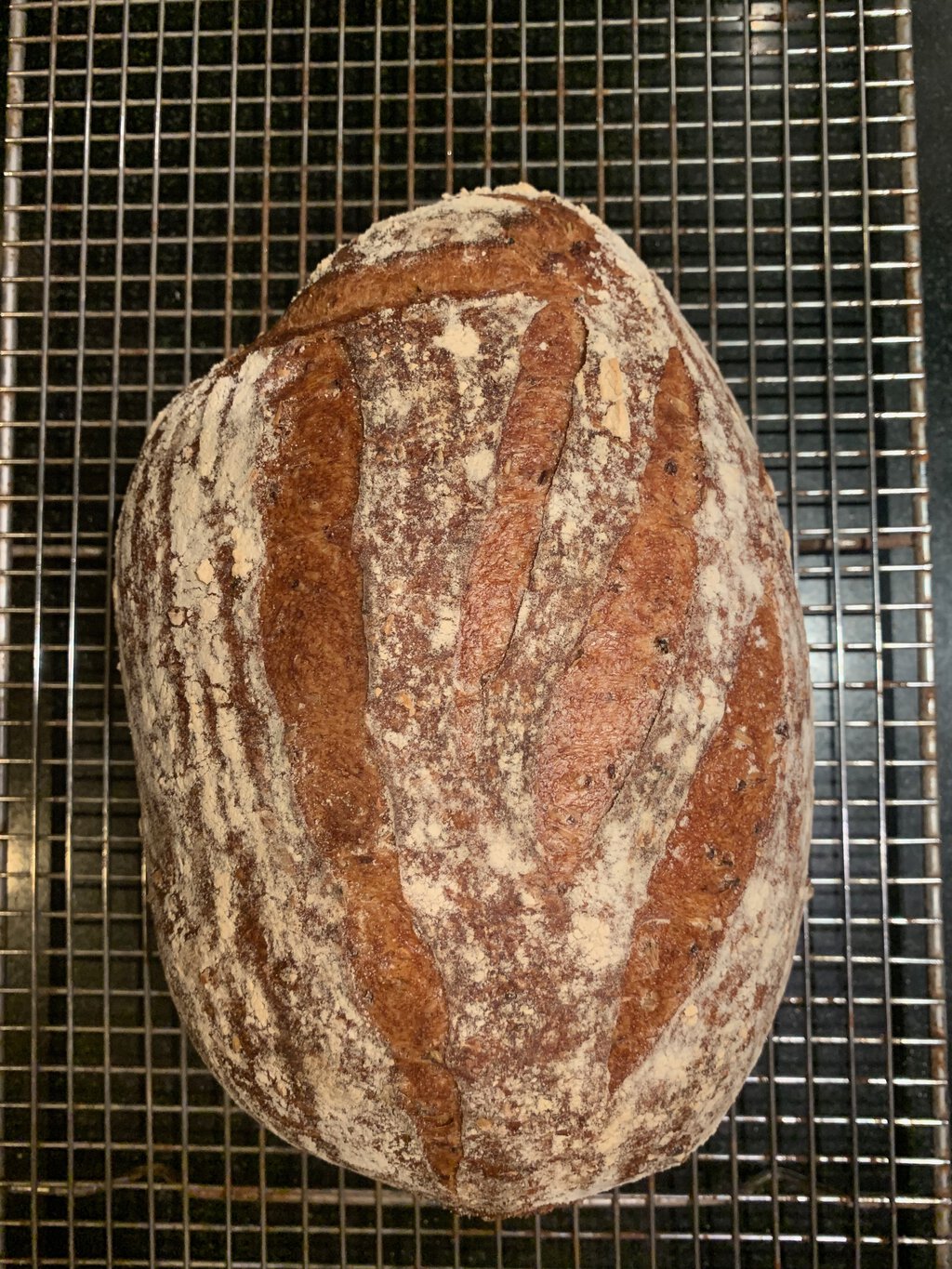Spent Grain and Trub Loaf
16 March 2019

The cozy relationship between breweries and bakeries is something I recall hearing about since I was a kid. Both baking and brewing use yeast; but both also produce it. Brewing, in particular, produces large amounts of yeast as a by-product. Some may be recycled for the next brew - but much is dumped. And, historically, some has ended up in the bakery next door.
Barm cakes were made using the krausen scooped off the top of fermenting ale - they were a favourite in northern parts of the UK (where I grew up), best enjoyed stuffed with chips. But trub, the sedimentary yeast-sludge from the bottom of the primary fermenter can be used too. For me, this passed from the quasi-mythological to the realm of urgently necessary practical experiment when I stumbled upon a well-written and detailed article, complete with recipe, a year or 18 months back (which, sadly, I can’t track down right now - I’ll keep trying). One afternoon, after bottling, trub in hand (well, glass jar), I set about baking, vaguely following said recipe. The yeast was very active, and before long I had a couple of well risen loaves. They looked great. But they tasted awful. So, so bitter and grassy. I realised then that trub from an American IPA wasn’t a good starting point.
Two weeks ago, though, while bottling a stout I recalled an earlier thought that the endeavour may be more successfull with the waste from a sweeter, less hoppy brew. So I put a few cups of the black, 1.014 FG oatmeal stout sludge in a jar and threw it in the fridge. To be used in due course, or discarded with disgust months later, as fate would have it.
I’ve recently seen a few images and posts by bakers using spent grain - the depleted and oft-discarded crushed malt (and adjucts) mashed in hot water as the first step of brewing. Earlier today, moments before the hot grist from a pale ale was scattered in the garden, that mind-seed sprouted, instinct kicked in and I held back a pot-full of the still steaming mulch. Thus, a plan was born. And the happy fate of the jar of black sludge was sealed.


Not having any recipe to work from, I started simple. I mixed 125g of spent grain with 375g of strong white flour, then added 7.5g of salt (1.5%, if counting the grain as a flour). To this I added 100g of trub. Figuring the trub might be 50% water/beer, I added 275g water for a target hydration of 65%. There was a lot of guesswork in this - and as soon as the dough started to come together, I realised how far off my liquid guesses were. For this was a very wet dough.
I left the dough to autolyse for 20 minutes before making my next move. It was still fairly unmanagable, so I added more flour, until in the end there was 550g of strong white. This gave me a dough which behaved as though it was around 70% hydration. In the end, I think the water portion of the trub was far higher than I estimated, and there was also quite a lot of liquid in the spent grain. On top of that, the spent grain didn’t absorb any liquid at all (of course - it was already wet).


Anyway, after an hour’s bulk, the dough has risen to around twice original volume. I went ahead an shaped it and put it in a banneton. As the yeast seemed active and it was a fairly hot evening (around 30 celsius) I was concerned about over-proofing. So I gave it only 30 minutes before baking at 220 for around 40 minutes.
The loaf looked pretty good - it rose well, and had a deep colouration. I was already too full - and it was getting too late - for immediate tasting though.


And so the next morning, having made coffee, I cut a few slices. The crumb was ok, not too tight, and the texture was good though moist (it could have done with a higher temperature or longer bake to drive off more liquid). The flavour was far better than the first try with IPA trub. But I knew immediately that this was a bread which needed to be toasted. After a light toasting, it showed its colours well, with a pleasant, slightly sweet, nuttiness and just a hint of bitterness on the after-taste, a reminder of its origin.
Notes for next time: Would take the approach of incorporating water gradually to hit desired hydration (as this is the hardest thing to control). I’d probably also add some wholewheat flour into the mix, and treat the spent grain as a soaker, not a flour - which in retrospect seems like the obvious thing to do. Also - really must try baking a balm bread…


Discussion
Nobody has left any feedback yet. Start the discussion by posting your thoughts above.